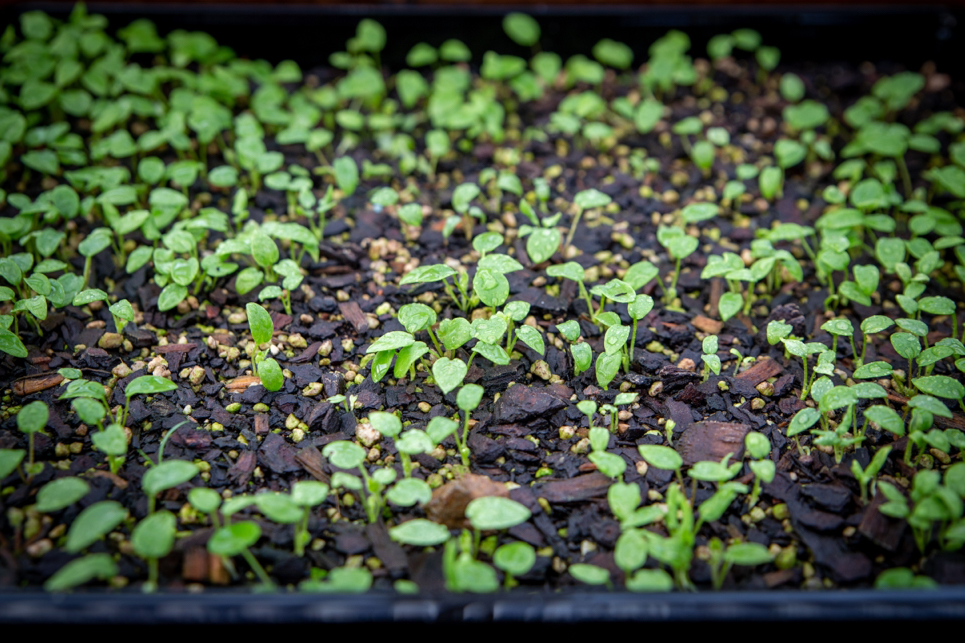Caring For Delphinium Plants Over Winter – Watch Out For Wetness Rather Than Cold

PERENNIALS > DELPHINIUM > OVERWINTERING

Elizabeth is a Permaculture Garden Designer, Sustainability Consultant and Professional Writer, working as an advocate for positive change. She graduated from the University of St. Andrews with an MA in English and Philosophy and obtained a Diploma in Applied Permaculture Design from the Permaculture Association.
Reviewed By DAN ORI

Dan has over 27 years’ under his belt caring for plants and gardens. Working as a Horticultural Instructor and Consultant, he draws on a diverse range of experience that includes working as a Head Gardener, Tree Surgeon, Garden Centre Trouble Shooter, and writer of academic papers. Dan has a Level 3 Diploma in Horticulture and is currently a candidate for the RHS’s most prestigious award – The Master of Horticulture.
DELPHINIUM GUIDES
Deadheading
Growing From Seed
Growing In Containers
Propagating Cuttings
Support
Varieties
Winter Care
How you care for delphiniums in winter very much depends on the type of delphinium that you have chosen to grow.
Perennial delphiniums are typically H5 or H6 hardy, so they can make it through even extreme winters in UK gardens as long as they are growing in a free-draining spot.
The most dangerous thing for delphiniums in winter is not cold, but wet.
Delphiniums grown as annuals, also known as ‘Larkspurs’, are the type I usually grow.
These will only grow over the summer and will not overwinter to flower the following year.
Usually I will simply remove these once the flowering display is over.

However, for perennial types which will overwinter:
- Make sure that perennial delphiniums are in a free-draining spot.
- Cut back delphinium foliage after the first frosts or in early spring.
- Move container-grown delphiniums to a sheltered location, protected from winter cold and wet.
Read on for a slightly more detailed description of how to care for perennial delphinium in winter:
1) Ensure Free Drainage
Delphinium are less susceptible to winter cold damage than they are to the problems associated with water-logging.

To keep perennial delphiniums healthy so that they flower again the following year, make sure the roots are in free-draining soil or growing medium, so root rot and other problems associated with water-logging are less likely to occur.
“It is, of course, best to grow delphinium if you want to overwinter in free-draining soil, but on occasion, I have improved heavier soils by adding sand and grit during planting and winter mulching,” shares Dan Ori, a Master Horticulturist.
2) Cut Back Foliage For Winter
Like other herbaceous perennials, delphinium will die back over winter before producing a flush of new growth the following spring.
If you wish to tidy up your beds or borders at the end of the year, you can cut back the leaves after the first frosts.

However, it can be a good idea to leave foliage in place over the winter, as though it may look a little untidy, it can be beneficial for wildlife.
Leaving dead and dying foliage in place over the winter months gives wildlife a valuable place to shelter during the coldest part of the year.
3) Move To A Sheltered Spot
Delphinium growing in containers are more vulnerable than those growing in the ground.
The roots of plants in pots are less insulated and can be more prone to cold damage.
Therefore, it is a good idea to move perennial delphiniums that are growing in pots to a more sheltered spot for the winter.
This should be somewhere they are protected from winter wet as well as from the cold.

I often move my delphiniums in containers to a spot in the lee of a wall or fence, which is drier and where excessive rainfall in winter is not as much of a problem.
However, it can also be a good idea, especially in wetter regions, to place the dormant plants into a cold frame, polytunnel or greenhouse until the early spring.
Roots are less likely to rot if they are placed somewhere where winter rainfall will not be an issue.
